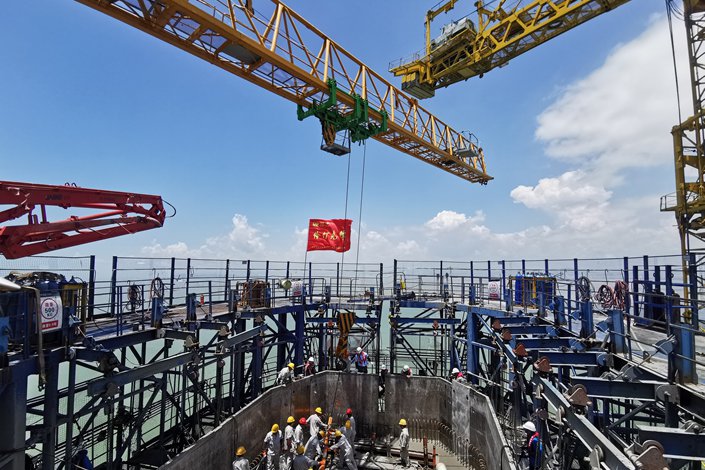
With the conclusion of China’s “Two Sessions,” the direction of the government’s expansionary fiscal policy has become clear. Overall, we believe that the intensity of China’s fiscal spending will reach a record high this year. Fiscal policy will play an important role in the country’s counter-cyclical measures, and the three main tools to be used are infrastructure investment, transfer payments, and tax cuts and refunds.
The government is stepping up fiscal spending this year backed by funds held over from previous years and profits handed over by select institutions. China lowered its general public budget deficit target to around 2.8% of GDP this year and cut newly added government debt — consisting of the general public budget deficit and local governments’ special-purpose bonds — to 7.02 trillion yuan ($1 trillion) from 7.22 trillion yuan in 2021. However, thanks to support from funds held over from previous years and the profit transfers, the government’s fiscal spending in a broad sense will grow 12.8% this year.
In addition, we conservatively estimate that the amount of local governments’ special bonds that were issued last year but not used up totaled about 1 trillion yuan, which could drive up fiscal spending growth in a broader sense to 15.6% this year; the fiscal deficit-to-GDP ratio in the broader sense could hit a record high at around 9%, up about 3.5 percentage points from 2021. Assuming the fiscal multiplier is 0.5, the rise in the deficit ratio in the broader sense could drive up nominal GDP growth by 1.8 percentage points this year.
The Ministry of Finance is introducing innovative tools to ease corporations’ tax burden, ramping up efforts in both tax and fee reductions and tax refunds. China’s tax cuts and fee reductions will reach 1 trillion yuan in 2022, and value-added tax (VAT) credit refunds will hit 1.5 trillion yuan.
As local governments face fiscal strain amid China’s ramped-up efforts in tax cuts and refunds this year, the central government’s transfer payments to local governments will increase significantly. In 2022, the transfer payments will be raised to 9.8 trillion yuan, up around 1.5 trillion yuan from 2021.
So, which areas will benefit from the expansionary fiscal policy? We can analyze this from the perspectives of expenditure and tax cuts and refunds.
The general public budget: According to the draft budget report, growth in expenditures in areas such as social security and employment; tourism, sports, and media; disaster prevention and emergency management; and education will outpace the overall growth in expenditures. Government spending will focus on ensuring the standard of living, which could facilitate improvement in people’s disposable income and purchasing power.
Government-managed funds: Funds available from special local government bonds will be the main source of the increase in government-managed fund expenditure. We believe areas set to benefit will include transportation (e.g., rail transit and expressway), water conservancy, industrial parks, urban renewal (e.g., pipeline network renovation and urban “smartization”) and social welfare. In addition, local governments have issued special bonds to support the construction of government-subsidized rental housing. Considering the increase in available fiscal funds, we revise up our estimate on the base-case scenario for infrastructure investment growth in a broad sense from 6% to 7%.
Tax and fee cuts: An increase in the proportion of research and development expenses eligible for tax deduction at small and midsize tech enterprises, and targeted supporting measures for the service industries involving personal contact are key bright spots.
Tax refunds: The government will prioritize support to the manufacturing sector, scientific research and technology services, environmental protection, electricity and gas, and transportation. VAT refunds can help ease cash flow pressure faced by micro and small enterprises and manufacturing companies.
The authors are economists at investment bank China International Capital Corp. Ltd.
This article has been edited for clarity and length.
Contact editor Lin Jinbing (jinbinglin@caixin.com)
Get our weekly free Must-Read newsletter.







